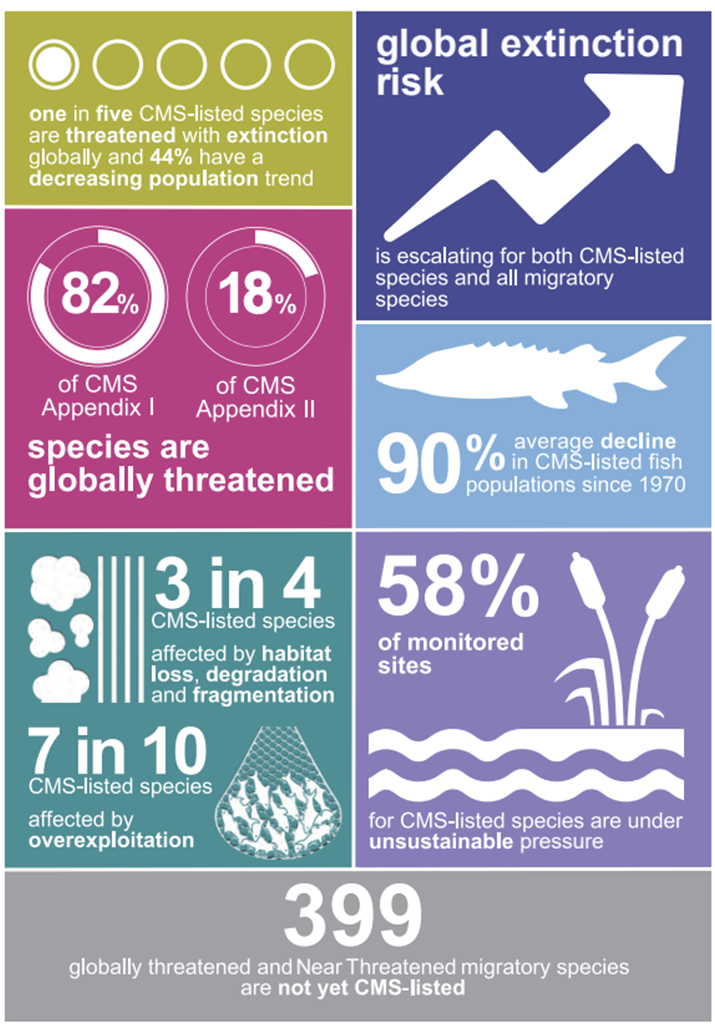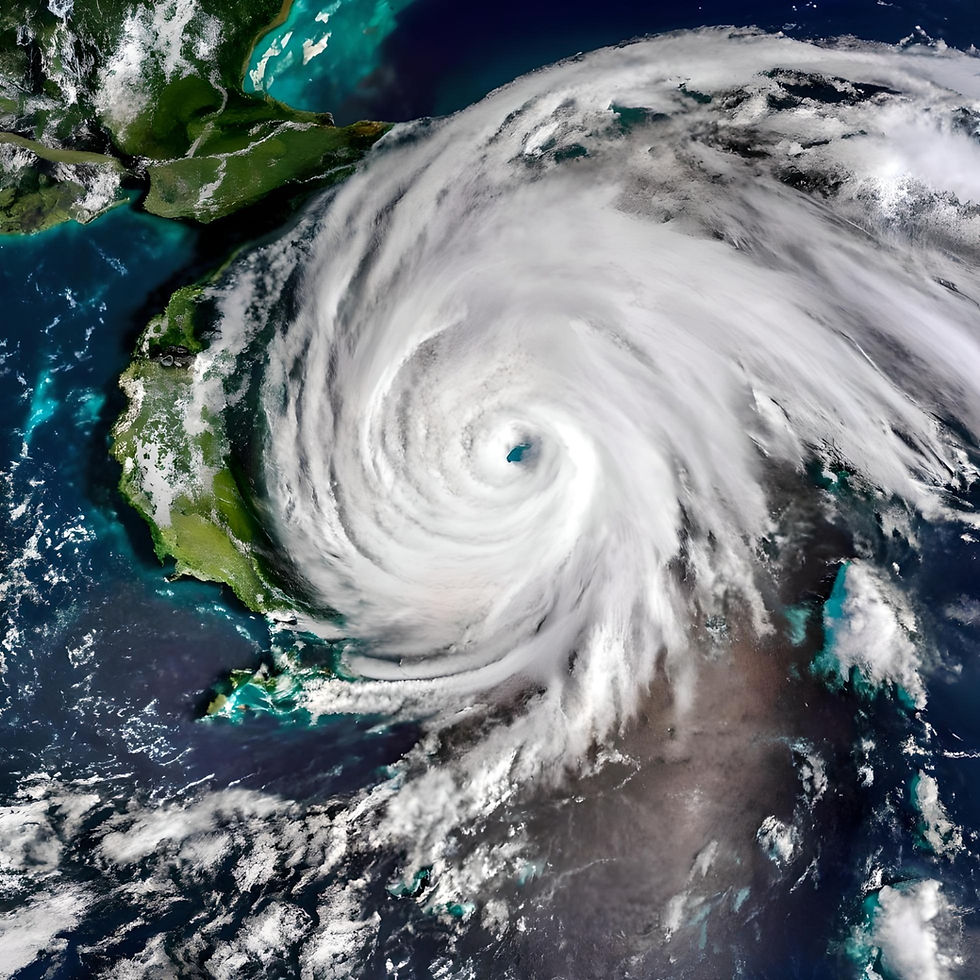Landmark UN Report on Migratory Species Reveal Extent of Extinction Threat
- Smruti
- Apr 27, 2024
- 2 min read
The report emphasizes the importance of mapping and safeguarding critical locations essential for breeding, feeding, and stopovers.
Image Courtesy: Garten, Pixabay
The inaugural ceremony of the State of the World's Migratory Species report, commissioned by the UN Environment Programme (UNEP) for the Convention on the Conservation of Migratory Species of Wild Animals (CMS), underscored that the global significance of migratory species across diverse ecosystems, including oceans, land, and skies. The report highlights alarming trends, revealing that nearly half of the migratory species are experiencing population declines, with one in five facing imminent extinction due to human activities.
The primary threats to migratory species identified in the report are overexploitation and habitat loss caused by human actions. Habitat loss, degradation, and fragmentation affect three-quarters of CMS-listed species, while seven out of ten are impacted by overexploitation. Pollution, climate change, and invasive species further compound these challenges.
Urgent and coordinated efforts are advocated to protect, connect, and restore habitats, mitigate overexploitation, reduce environmental pollution, address climate change, and extend conservation efforts to all species in need. The report emphasizes the importance of mapping and safeguarding critical locations essential for breeding, feeding, and stopovers. Despite the fact that nearly 10,000 Key Biodiversity Areas being vital for migratory species, more than half are not designated as protected areas, and 58% of monitored sites are under threat due to human activities.
Image Courtesy: UN Report on Migratory Species
According to the IUCN Red List, one in five CMS-listed species are threatened with extinction and many are undergoing population declines. Extinction risk is rising for CMS-listed species, with considerably more species deteriorating than improving between 1988 and 2020. Across the wider group of all migratory species, levels of extinction risk are also escalating. This report further indicates there are at least 399 globally threatened or Near Threatened migratory species that are not yet benefitting from the international protection afforded by the Convention.
Addressing climate change is a priority; hence, it is highlighted here, urging nations to fulfil international commitments to reduce greenhouse gas emissions and enhance carbon stocks in vegetation and soils. The report stresses the need to future-proof vital sites against climate change effects and implement dynamic management measures to adapt to shifting migration patterns.
Efforts to mitigate the impacts of renewable energy infrastructure expansion on migratory species are also emphasized. The report underscores the essential role of migratory species in maintaining healthy ecosystems, with billions of animals undertaking remarkable journeys across thousands of miles each year, linking different parts of the world.
The State of the World's Migratory Species report offers a comprehensive overview of the conservation status, trends, and key pressures facing migratory species. It highlights ongoing conservation efforts and emphasizes the urgent need for coordinated action to safeguard these vital components of global biodiversity. Through their extraordinary journeys, migratory species offer invaluable insights into the interconnectedness of ecosystems and the profound changes affecting our planet.
Access the complete report here.

Author
Rituraj Phukan is an environmental writer, adventurer & naturalist based out of Assam. He serves as the National Coordinator for Biodiversity, The Climate Project Foundation, and is a member of the IUCN.














SUDIRMAN168
SUDIRMAN168
SUDIRMAN168
SUDIRMAN168DAFTAR
SUDIRMAN168LOGIN
SUDIRMAN168ALTERNATIF
SUDIRMAN168TERPERCAYA
SUDIRMAN168MAXWIN
SITUSPILIHANSUDIRMAN168&LAPAKBET777
LAPAKBET777
LAPAKBET777RESMI
LAPAKBET777GACOR
LAPAKBET777DAFTAR
LAPAKBET777LOGIN
LAPAKBET777ALTERNATIF
LAPAKBET777MAXWIN
TERMINAL4D
Finally, for fans searching for a Porn Star Name, we have put together a list that is exciting, daring, and downright unforgettable.
KSR88
KSR88
KSR88
KSR88
KSR88
KSR88
KSR88 Link Alternatif
KSR88 Gacor
KSR88 Login
KSR88 MaxWin
KSR88 Terbaik
KSR88 Slot
Daftar Link Dofollow
lapak7d
lapak7d
lapak7d
lapak7d
lapak7d
lapak7d
lapak7d
lapak7d
lapak7d
lapak7d
lapak7d
lapak7d
lapak7d
situs slot demo
slot demo X1000
scatter hitam
slot toto
situs slot online
situs slot online
situs slot online
situs slot
situs slot
situs slot
situs slot
sudirman168
sudirman168
sudirman168
slot gacor
toto singapure
situs toto 4d
toto slot 4d
pg soft mahjong2
mahjong2
pocari4d
pocari4d
pocari4d
pocari4d
pocari4d
pocari4d
pocari4d
terminalbet
terminalbet
data pemilu
utb bandung
universitas lampung
slot bonus new member
ksr88
ksr88
ksr88
ksr88
Slot Dana
situs slot gacor hari ini
terminal4d
terminal4d
terminal4
slot gacor
slot toto
slot qris
toto togel
togel online
situs gacor
slot gacor auto wd
slot88
gacor777
slot777
slot toto
apk slot gacor 777
slot gacor bulan ini
toto slot
apk slot toto gacor
bacan4d
slot gacor gampang menang
toto gacor